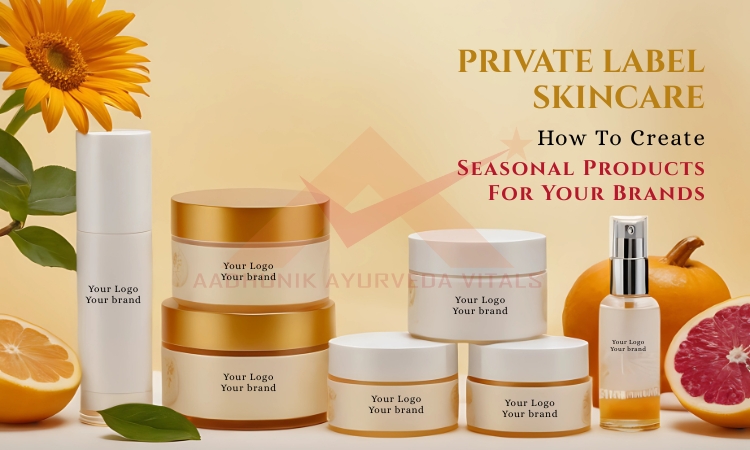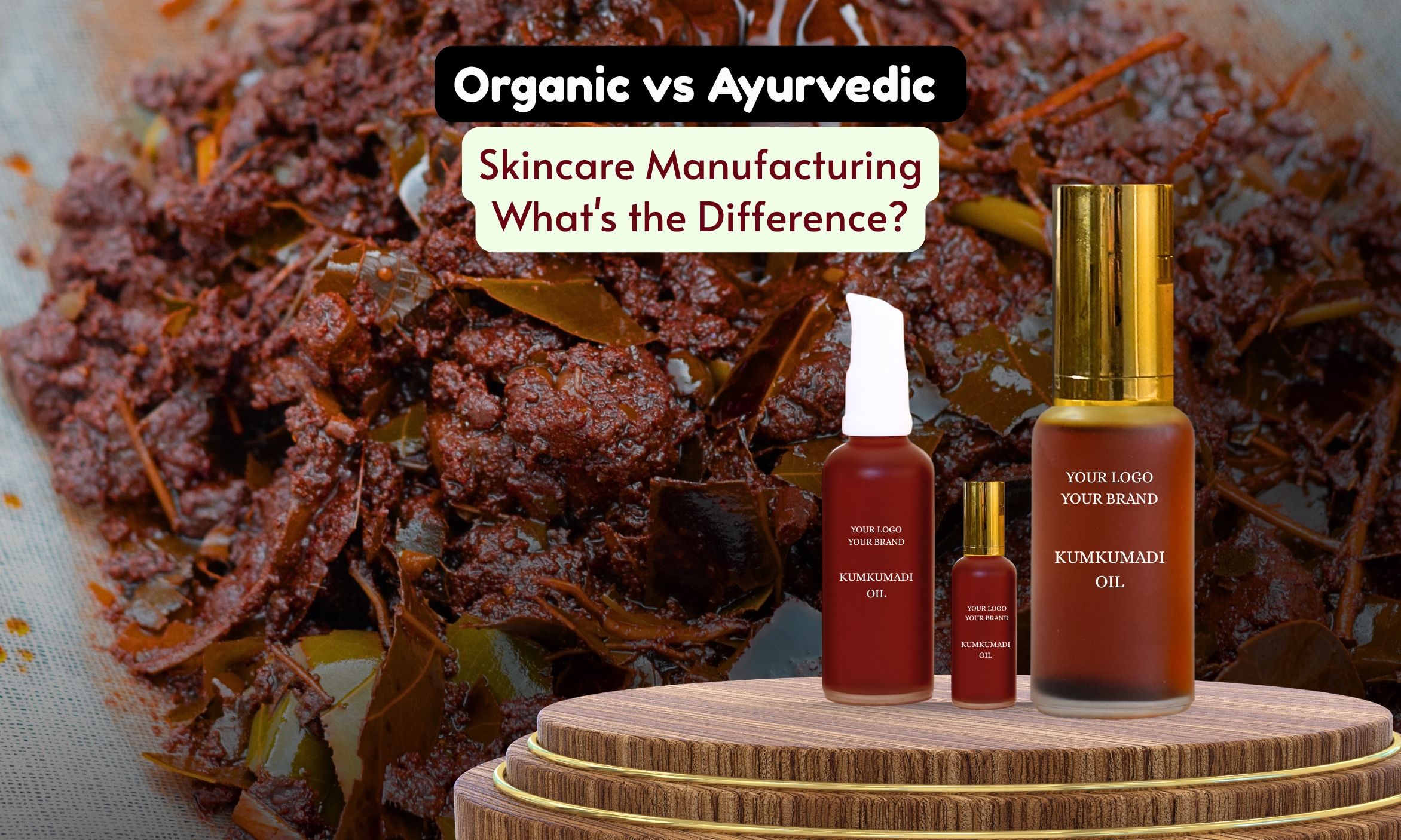
Best Practices for Building a Seasonal Skincare Product Line: A Manufacturer’s Guide
Best Practices for Building a Seasonal Skincare Product Line: A Manufacturer’s Guide | Understanding the Concept of Seasonal Skincare | Importance of Seasonal Formulation in Skincare | Key Opportunities in Monsoon Skincare | R&D: The Backbone of Seasonal Product Development | Seasonal Ingredient Trends in India | Packaging ConsiderationsAs consumer awareness grows around climate, environment, and skin sensitivity, seasonal skincare has emerged as a strategic and essential category in the personal care industry. Seasonal changes bring distinct challenges to the skin: dryness in winter, oiliness in summer, and fungal concerns during monsoon. As a result, brands are now creating targeted seasonal lines to meet these evolving needs. For manufacturers, especially those looking to tap into this fast-growing segment, understanding best practices is critical.
As a seasonal skincare manufacturer in India, we share deep insights and proven methods for developing high-performing seasonal skincare lines.
Understanding the Concept of Seasonal Skincare
Seasonal skincare involves curating formulations that meet the skin’s varying needs across different times of the year. During summer, skin might need lightweight, oil-controlling formulas, while winter demands heavier, deeply moisturizing products. Due to humidity and exposure to water, the monsoon season necessitates the use of antibacterial, antifungal, and hydrating solutions.
As a seasonal product manufacturer in India, understanding the physiological shifts in skin through seasons is the first step in curating relevant and effective product lines.
Importance of Seasonal Formulation in Skincare
From a manufacturing perspective, creating seasonal formulations involves more than just repackaging existing products. It requires:
- Ingredient customization: Selecting ingredients that align with seasonal skincare needs.
- Texture adjustments: Developing creams, gels, and serums with textures suited for varying weather conditions.
- Product preservation: Considering account of the effectiveness and shelf-life of seasonal actives as well as their behavior in various climates.
By incorporating these aspects, a seasonal skincare manufacturer in India can ensure products not only meet consumer expectations but also provide visible results.
Key Opportunities in Monsoon Skincare
India’s monsoon brings high humidity, rain, and fluctuating temperatures, making it a unique season that demands special product formulations. As a monsoon skincare manufacturer, you must focus on ingredients that cater to:
- Oily skin control
- Fungal and bacterial resistance
- Scalp care due to sweat accumulation
- Light hydration
This is why rainy season skincare products in India are becoming more popular with every passing year. The demand ranges from face mists and antifungal foot creams to lightweight moisturizers and scalp-cleansing shampoos.
R&D: The Backbone of Seasonal Product Development
Strong research and development are essential. Leading seasonal product manufacturers in India invest in skin physiology research to understand how skin functions in each season. R&D teams work to:
- Identify trending seasonal ingredients
- Test compatibility and stability
- Innovate texture and scent profiles
For example, watermelon extract might be ideal in summer for its hydrating and cooling properties, while rosehip oil works better in dry winters for its nourishing qualities.
Seasonal Ingredient Trends in India
Seasonal product trends in India show a preference for local, Ayurvedic, and organic ingredients. Some examples include:
- Summer: Aloe vera, cucumber, green tea, mint
- Monsoon: Neem, tulsi, turmeric, tea tree
- Winter: Kokum butter, almond oil, shea butter, rosehip
These ingredients align well with seasonal needs and resonate with the growing demand for clean, traditional skincare.
Packaging Considerations
Different weather conditions require packaging that protects the integrity of the product. For instance:
- Humidity-resistant packaging during monsoon
- Airless pumps for antioxidant-rich creams in winter
- Sustainable solutions like recyclable PET, glass, or metal to match brand values
As a responsible seasonal skincare manufacturer in India, aligning product design with seasonal and environmental sensibilities is crucial.
Branding & Marketing for Seasonal Launches
To make a seasonal skincare product line successful, manufacturers must help brands with a clear narrative:
- Educate consumers on why seasonal care is essential
- Highlight seasonal activities on labels and marketing collaterals
- Limited edition or festival tie-ins to boost appeal
Supporting your clients in these efforts enhances brand value and helps maintain long-term partnerships.
Common Mistakes in Seasonal Skincare Production
Some mistakes in seasonal skincare production that manufacturers must avoid include:
- Ignoring regional climate variations
- Using generic base formulas year-round
- Inadequate testing for stability and performance
- Over-reliance on trends without scientific backing
- Poor scalability plans for peak season demand
Avoiding these mistakes can distinguish a reliable seasonal product manufacturer in India from a generic third-party supplier.
The Manufacturer’s Role in Seasonal Success
Successful seasonal product development relies heavily on teamwork. As a manufacturer, your role includes:
- Conceptualization support: Helping clients choose the right product types per season
- Formulation excellence: Tailoring ingredients and actives that perform well in seasonal conditions
- Regulatory compliance: Ensuring seasonal ingredients are safe, certified, and compliant
- Speed to market: Fast prototyping and sample delivery for timely launches
The more value you add at each of these steps, the more indispensable you become as a partner to skincare brands.
Why Choose a Seasonal Manufacturer in India
India, with its rich herbal tradition and diverse climate, offers a unique advantage for seasonal product development. A monsoon skincare manufacturer in India understands the local climate, ingredient sourcing, and consumer preferences better than overseas manufacturers.
India’s strength as a seasonal skincare manufacturer lies in:
- Availability of seasonal herbs and Ayurvedic ingredients
- Skilled workforce and R&D capability
- Competitive pricing
- Flexibility in low MOQ production for seasonal lines
Conclusion
Seasonal skincare is more than just a trend—it’s a smart, targeted way to meet evolving consumer demands. By aligning your formulation strategies, ingredient sourcing, packaging, and marketing with seasonal changes, you can help brands stay one step ahead of the market. As a seasonal skincare manufacturer in India, your ability to innovate and support brands in launching effective, timely, and unique products is the key to long-term success.
Whether it’s monsoon skincare manufacturer support, creating rainy season skincare products in India, or understanding seasonal product trends in India, embracing best practices is the path forward.
FAQs:
1. Why is seasonal skincare important for Indian brands?
Seasonal skincare caters to changing skin needs across the year and helps brands stay relevant with consumers.
2. What is the role of a seasonal skincare manufacturer in India?
They develop customized, effective skincare formulations tailored to the needs of each season and climate.
3. What are the common mistakes in seasonal skincare production?
Using generic formulations year-round, poor stability testing, and ignoring regional weather differences.
4. What ingredients work well for monsoon skincare products?
Neem, tulsi, tea tree, turmeric, and lightweight hydration actives are commonly used in rainy season skincare products in India.
5. Can seasonal skincare lines be manufactured with a low MOQ?
Yes, a reliable seasonal product manufacturer in India can support low minimum orders tailored to seasonal launches.
6. What are the benefits of manufacturing seasonal skincare in India?
Local ingredient access, cost-effective production, Ayurvedic knowledge, and market-relevant formulations.




